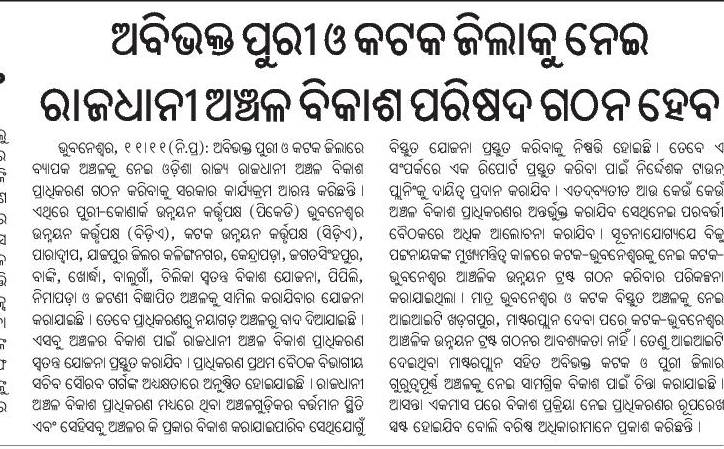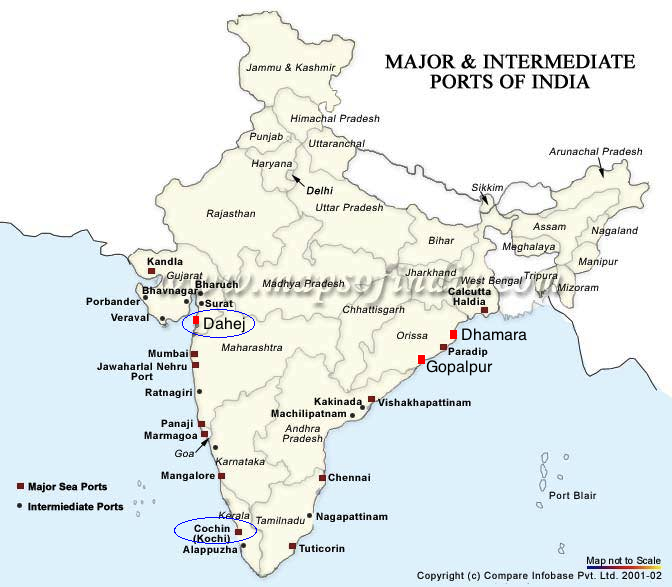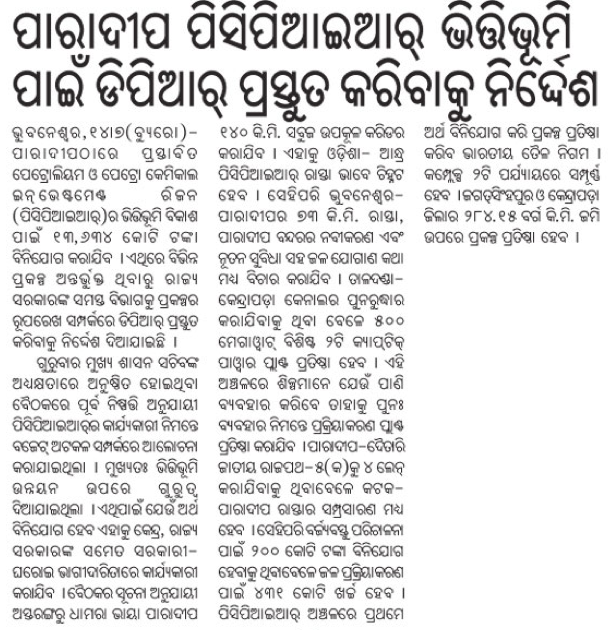Work starts on Paradeep-Choudwar-Rourkela Industrial Corridor
Angul, Anugul- Talcher - Saranga- Nalconagar, Bhubaneswar- Cuttack- Puri, Bhubaneswar-Dhenkanal- Anugul, CKP ... Bhalulata - Rourkela - Jharsuguda Jn - Daghora , Cuttack, Cuttack - Paradeep, Cuttack-Paradip, Dhenkanal, IDCO, Jajpur, Jharsuguda-Sambalpur- Bargarh, Jharsugurha, Jharsugurha- Brajarajnagar- Belpahar, Kendrapada, Khordha, Paradeep port, Paradip - Jatadhari - Kujanga, Rourkela- Kansbahal, Rourkela-Jharsuguda, Sambalpur, Sambalpur - Talcher, Sambalpur-Burla-Jharsuguda, Sambaplur- Burla- Bargarh- Chipilima, Sundergarh, Talcher - Barang, Talcher - Bimlagarh (under constr.) 1 Comment »Following is an excerpt from a report in ibnlive.com.
The state government has started work on development of a railway corridor through Choudwar to Rourkela to allow ease of inward and outward transportation of goods from the industrial hubs and mining belts along the region.
Land acquisition for the project, the first of its kind initiative by a state government, has already been initiated by the Industrial Infrastructure Development Corporation (Idco). The project would go on ground after the land acquisition and is targeted to be completed by 2015, said Idco CMD Priyabrata Patnaik on Friday.
The corridor involves development of extensive rail and road connectivity, along with provisioning of water supply and other infrastructural facilities. The corridor would encompass two track railway lines and six-lane road passing through the industrial hubs and the coal mining belts. New industrial areas and downstream units would be developed along the corridor.
Common infrastructure facilities under the corridor would solve the problems of inward and outward transportation of goods and minerals. The stretch would pass through the heart of coal mining operations in the state, which harbours about 65 billion tonne of reserves. The coal reserves in the Talcher belt only is around 43 billion tonne.
The corridor would cover 17 large and mega-industries, along with 57 other units, through the stretch from Choudwar to Rourkela. Traffic projection on the route is given out as 8.7 million tonne.
The route would have 163 km of railway track length and 465 km on road. As many as 308 minor bridges and 77 major bridges would have to be constructed on it, said Patnaik.
Note 1: The 163 km of railway track probably refers to the Talcher-Bimlagarh segment.
Note 2: Although the above report only mentions the Choudwar-Rourkela part, in earlier documents there is mention of Paradeep-Choudwar-Rourkela industrial corridor. See for example this 2009 Business Standard report. Following are some excerpts from that.
The Orissa government plans to develop an industrial corridor running from Paradeep to Rourkela through industrial hubs like Choudwar, Talcher and Sambalpur.
Though the initial proposal was to have an industrial corridor originating from Choudwar to Rourkela, the proposal was modified to extend the corridor till Paradeep to allow inward and outward transport of goods through the Paradeep port, sources said.
… The proposed industrial corridor will be in line with the Delhi-Mumbai Industrial Corridor and is designed to pass through national highway no.42 and national highway no 5 (A).
Under the project, both road and rail corridor will be developed, which will be the backbone of the proposed project. The industrial estates and down stream units would be developed over 25 km area on both sides of the corridor.
IL&FS has been appointed as the consultant for the project and it has already submitted the pre-feasibility study report to the industry department on the project. However, the detail cost of the project is yet to be worked out yet, sources added.
…
The latest initiative of the state government follows a similar initiative to develop a common ‘rail-road-water pipeline and infrastructure corridor’ in Meramundali-Angul-Talcher-Chhendipada belt, to facilitate movement of coal in the Talcher coalfield area.
The project is estimated to cost about Rs 5000 crore including Rs 2000 crore for 2-line rail corridor and Rs 1100 crore for 4 lane road alongside it. The land width of the proposed corridor will be 300 metre which includes 60 metre for road and 20 metre for water pipeline.
The total length of the corridor is 137 kilometre which includes length of 43 number of major bridges to be constructed on this stretch. RITES Ltd has already submitted a pre-feasibility report to the state owned Industrial Infrastructure Development Corporation of Orissa Ltd. (Idco) on the project.
The project is designed to have multi-point centralised loading stations conceived along the corridor rather than individual bulb connections with a view to avoid interference or wastage of coal bearing areas. Road and water pipe alignment will run parallel to rail alignment, sources said.
It will be connected to rail line at three locations- Jharpada, Angul and Budhapanka. The common corridor will have multiple entry and exit points and no surface crossing. Besides, flyovers are proposed to avoid cross movements at junction stations.
This ‘rail-road-water pipeline and infrastructure corridor’ in Meramundali-Angul-Talcher-Chhendipada belt is projected to handle 113 million tonne coal by 2014-15. It includes 55 million tonne coal movement required by the power companies, 40.76 million tonne by steel companies and 17.22 million tonne by other industries.

(1).jpg)
.jpg)


